A collection of stories and explanations by Jim Watson and Vince Giuliano
The stories are fantasies about new kinds of bars that could possibly exist in the future. The Hormesis Bars are ones where all the drinks produce stresses. According to what many believe, these stresses could actually make you live longer and more healthier. This is because most of the drinks served in the bars consist of deadly poisons or toxic actions. The stories are heavily interspersed with explanations on the science behind the purported health effects of the drinks and with links to other blog entries and citations.
Just like for the amazing stunts that appear commonly in TV, we have to warn you DO NOT TRY THESE DRINKS OR TREATMENTS YOURSELF. If such bars were to exist in the future, one thing is for certain, and that is that the doses will have very carefully been worked out so as to produce safe hormetic results. In most cases we do not now know what those doses should be. And, appropriate doses could depend on the individual and their momentary state. And yes, wrong doses could lead to disastrous results. Hormetic bars would probably be reguIated by very strict laws.
Image source Image source Image soure
These stories are about various ways of realizing health via hormesis, so if you don’t know what that is we strongly suggest you find out before trying to understand the implications of drinking drinks from the hormesis bars. A good initial approach could be to view our PowerPoint presentations downloadable from this link. And you can find many other blog entries related to hormesis in this blog such as Multifactorial hormesis – the theory and practice of maintaining health and longevity. And, we suggest other citation links throughout the stories.
The Hormesis Bar Menu
Imagine a large stone building with an ornate classical façade decorated with stone gargoyles in various states of suffering. There is a desk and a gate at the entrance, and in order to get in you have to sign a 9-page fine-print document that absolves the bar operators from any legal liability for what might happen to you as a result of your visit. Inside there are is a collection of shops – the individual hormesis bars. Most are dark and exotic with rich marble floors, mahogany walls and lots of polished brass. Some seem to be filled with elaborate plumbing.
Welcome to the Hormesis Bars. We serve “stress drinks” all day and recommend resting at night to recover. All of our “stress drinks” are served in small shot glasses. A big glass of these drinks would kill you. Many believe that these “small shot glass stress drinks” are bad for you, but we believe they will actually make you live longer and more healthier. Just think of them as being “stress chasers”…….small shots of stressors that are too small to kill you, but big enough to vaccinate you from getting killed from a 24-once glass stress, such as a heart attack, a stroke, a big dose of nuclear radiation or getting hit by a bus.
We think our drinks do much more than chase away the liberal, free radicals. They actually create stress signaling molecules in your body within minutes or hours, but several may protect you from larger stressors for weeks to months. This idea of a “small shot glass of stress” before a “super sized stress glass” is called preconditioning.
Our Famous Seven Sirtuin Silencing Spices of Life
Near the entrance is a special kind of spice shop. We have discovered seven spices that make your drinks taste or work better. We call these the “Seven Sirtuin Silencing Spices”, although we are not exactly sure what they are silencing. If you sprinkle some “Sirtuin spice” on your main menu item from one of the hormesis bar menus, the Xenohormesis Bar menu, or the Xenobiotic Bar menu, we think that your drink will give you a bigger “shot in the pants”. It may help with the tastes as well, since some of our menu items are a “bitter pill to swallow”, especially the ones on our Xenohormesis Bar menu. All of the Sirtuin spices will make your drink taste better, kill cancer, and keep you alive. We now offer 7 flavors of Sirtuins which well call the “spice of life” in that they will make you live longer. Here are our menu offerings “du jour”. We have made some suggests as to what menu items you should add each spice to. Enjoy the bar!
The Sirtuin spices are our most popular spices that activate stress coping pathways, making them work better. These spices also silence bad genes, help get rid of ammonia, help with sugary diets, and make the microtubule railway transport things faster. We offer 5 varieties that deacetylate and 2 varieties that ADP-ribosylate.
SIRT1 – this spice is good for making the stressor more efficient at turning on your stress coping genes. It goes well with the following menu items (transcription factors): FOXO3a, p53, Nrf2, NF-kB, PARP-1, Ku70, Notch. It also goes well with the following combo menu items (co-activators): PGC-1a, p300, NCoR. We have talked about this spice in the three most-recent blog entries (ref)(ref)(ref), and in several others.
SIRT2 – this spice is good for suppressing bitter tasting DNA, such as non-coding repetitive DNA that has no replicative value and should be silenced, you know, like messy retrotransposons that love to duplicate themselves crowding-up our genomes. SIRT2 is good at silencing this at Histone 4 at lysine #16, by removing the acetyl group there (H4K16)(ref). This keeps your genes stable(ref). This spice also goes great with our FOXO1 menu item to help you eat yourself for dinner (autophagy). This spice also goes well with our FOXO3 and p53 menu items to help you become resistant to cell death (apoptosis) and resist those liberal, dangerous, free radicals (ROS). (ref) This spice will also allow you to get around better by removing acetyl groups from your alpha-tubulerailway transport system. You can get important stuff from point A to point B better this way on your little intra-cellular railroads(ref).
SIRT3 – this spice goes well with anything from our mitochondrial menu items(ref)(ref)(ref)(ref). This spice variety goes well with PGC-1a and with UCP-1. If you are a long distance runner, we suggest PGC-1a for turning on your PPAR gene. (ref)(ref). If you are cold all the time, we would add SIRT3 and UCP1 (ref) together to keep you warm. We also suggest you consider adding this spice to SOD2, a popular mitochondrial menu item that will help you deal with rogue, free radicals that leak out of the electron transport system. We have heard reports that the leak rates have been rising from 2% to as high as 40% in some cases, due to the bad local energy economy (in certain mitochondria) (ref).
SIRT4 – this spice goes well with anything from our mitochondrial menu as well, but is very unique(ref). It has a very different flavor than the other spices above, but is similar to our SIRT6 spice below. These spices do not take away acetyl groups, but adds an ADP-ribosyl to your menu item. This spice goes great with sugary menu items, since it stimulates insulin secretion.
SIRT5 – this spice also goes well with our mitochondrial menu item, and is our best spice for getting rid of ammonia. It gets rid of ammonia, turning it into urea which allows you to “piss away your ammonia”, rather than making you sick.(ref)(ref)
SIRT6 – this spice is similar to our SIRT4 spice above in that it does not take away acetyl groups, but adds ADP-ribosyl to any menu item. This spice is our best survival spice, in that it helps you repair your DNA, protects you from death (apoptosis) and helps you survive. Unfortunately, it stimulates inflammation to do this (by promoting NF-kB and TNF, the opposite of SIRT1 in this respect).(ref)(ref)(ref)
SIRT7 – this is our favorite spice, since it controls protein synthesis in the cell nucleus. This spice deacetylates nuclear histones, silencing genes for protein biosynthesis.(ref)
The bars are grouped into three clusters: Hormesis Bars, Xenohormesis Bars, and Xenobiotic Bars.
I. The Hormesis Bars – Legendary stories, legendary drinks
These drinks are “the real thing”, not some fake namby-pamby “mimetic” drink. (There are no tiny umbrellas or slices of lemon on these drinks….just hard core, punishing drinks that will make a grown man cry and say “Uncle”). Most of the bars serve drinks are also natural and are “xenofree,” exceptions being our Xenohormetic Bar and Xenobiotic Bar below. (Not that the xenohormesis or xenobiotic drinks are bad……they are just not natural.) Unfortunately, these drinks will make you sweat, shiver, wither, or gasp for air. Some are not for the faint hearted (especially for those visiting the Radiation Bar or the Igloo Bar). We recommend mixing drinks. A good mix is combining a drink from the Desert Bar and the Igloo Bar. Another good combination is the Starvation Bar and the Hypoxia Bar, but few can take this “mixed drink” without passing out. We have included some amazing stories below that can be told while sitting on the bar stools. These stories are hard to believe, but no one questions their legendary status as “heroic fables”. (They are much more believable than fisherman’s stories about catching big fish).
A. The Oxygen Bankruptcy bar – Bar story: The legend of the bartender at the Oxygen Bar who ran out of oxygen
This our most popular bar in the plain-hormesis section. It is one of our two “gasping bars” where clients are gasping for a breath of air. (The other is the Hypoxia Bar). It involves extreme physical exertion, going past the point of sweating and into the zone of oxygen debt. Fast treadmills, powered staircases and other fiendish machines force the exertion. A “drink” consists of a timed ride on such a machine. All drinks at the oxygen bankruptcy bar cause pain. They all stimulate a lot of Nrf2 and AMPK. (ref)(ref)(ref)(ref)(ref). If you have too much mTOR or NF-kB in your system, these drinks will get rid of mTOR and NF-kB(ref)(ref). After the pain, you will feel better. You have to wear a cardiogram monitor while on a machine and it will shut down automatically if there is any sign of an impending heart attack.
Legend has it that a clever bartender at an “Oxygen bar” ran out of oxygen on day. There were a lot of customers hanging out so he started selling drinks with low oxygen, instead of high oxygen. He hoped nobody would notice. But to his surprise, he found out that low oxygen levels were actually better for his clients than extra oxygen. So, he changed the name of the bar to the “Oxygen Bankruptcy Bar” and raised the price of drinks. This improved his profit margin a lot since his cost for the oxygen ingredient went down to zero. Later he found out that he did not have to lower the oxygen, but could just make his clients exercise vigorously while breathing ordinary air. So he installed heavy exercise machines. The exercise had to be so vigorous that the clients were in pain. He called this concept the “no pain, no gain” principle and went on to start a gym called Gild’s Gym. The claim is that if you do not have a sour taste in your mouth or if your muscles are not burning, you have not exercised hard enough. The pain is due to lactic acid, and is actually NOT “oxygen bankruptcy”. In this sense, the term “Oxygen Bankruptcy bar” is not very accurate either. The true “oxygen bankruptcy bar” is actually the Hypoxia bar.” (see below). .
B. The Desert Bar – also known as the Heat Shock Bar –
This bar consists of hot sauna rooms, hot tubs, sweat lodges and infra-red chambers, places that can make you hot. There is also a “light treatment” area where you can put on clothes with circulating hot water.
Bar story: The legend of the origin of the term “shock and awe.” This bar is one of our two “shock bars”. Both produce “shock proteins” which can help you survive any “shock and awe”. This “shock bar” makes a type of protein called “heat shock factor”, or HSF. There are 4 HSFs, named HSF1, HSF2, HSF3, and HSF4. (ref)(ref)(ref)(ref) The legend of the name of the “heat shock bar” comes from the US Military. Troops were training in hot weather for the Iraq invasion and were “shocked” at how hot it was outside in Kuwait (it was about 42-45 degrees C). To the surprise of the Army generals, the soldiers who survived these extremely hot conditions became stronger. To memorialize these “heros of heat”, the US Military called the Iraqi Invasion the “shock and awe” attack. The “shock” was the hot weather that the soldiers endured and the “awe” was the amazement of the big fat generals in their air conditioned HumVees, who did not do as well as the soldiers in the heat. Now we know that the “heat shock” survival advantage of the solders was due to the “Heat Shock proteins” produced by the desert sun heat. (Not everyone believes this legendary version of the story, but it is still a great story to tell sitting on a stool in an air-conditioned bar.) The chaperones at this bar are very good refolding proteins, getting our clients back into shape, if they become unfolded. So, this bar is very popular with our “unfolded protein” customers, since we offer chaperones for any client who may become disheveled with the heat. Expression of such chaperone proteins is called the “unfolded protein response.” We have chaperones who specialize in refolding in all 4 rooms of the bar (mitochondria, ER, cytoplasm, and nucleus).
All of our “shock drinks” at this bar are served hot. They can be steamed, served dry, served in a tub, or served in a sweat house. We suggest drinking this at 40-42 degrees C and not drinking for more than 20-30 minutes or you may pass out. If you are sweating profusely and are begging to go to the Igloo bar, then you have had enough. We recommend “bar hopping” from the heat shock bar to the Igloo bar and then repeating this over and over.
C. The Igloo bar – Bar story: The legend of “Ig the Explorer” and the true story of the “200 club”
This is the other “shock bar.” It consists of refrigerated rooms and lockers, icy water tubs, actual igloos and powerful air-conditioners that can blow on you. Clothing here is frowned upon. One room has a thick layer of snow on the floor and you are encouraged to lie down there and make snow angels,
Many of our clients come here after visiting the Heat Shock bar, but then start “bar hopping” back and forth from the Heat Shock Bar to the Igloo bar. This type of “bar hopping” is very popular with our guests from Scandinavia. They claim it is really good for the immune system, but we don’t know exactly how this works. We encourage, but do not mandate the Scandinavian dress code at this bar, however (In Norway, Sweden, Finland, and Denmark, they don’t wear any clothes!). The original Igloo bar was not in Scandinavia, but was built by prehistoric explorers who crossed the Bering Strait on their way to the “New World” from Asia. Back then, the Bering Straight was mostly land and only had a few shallow water areas covered with ice. Legend has it that one of these explorers had some Neanderthal heritage and was not very smart. His name was ‘Ig” (this is the origin of the word ignorant). Ig ventured out onto thin ice and fell into the frigid waters of the Bearing Straight (which was very shallow back then). Despite being really stupid, the “cold shock” stimulated Ig enough to climb out of the ice cold water. Instead of dying, he survived and became stronger than his (smarter, non-Neanderthal) peers. Later during the expedition, a largeGrizzly bear attacked the expedition. Due to all of the “cold shock proteins”, Ig was able to fend off the Grizzly bear and save the lives of all of the (smarter, but weaker) expedition members. To memorialize the heroism of “Ig the Explorer” and his miraculous survival from falling through the ice, the explorers built a house out of ice and named it “Igloo” for “Ig the explorer”. This legend has survived many winters and has taken on “fable status” in communities near the North Pole, Not to be outdone by North Pole legends, the South Pole Scientists have created their own bar with legendary stories. They call this bar the “200 club”. Here South Pole stress aficionados sit in a hot tub at 110 degrees F, then run naked outside into the frigid outdoor temperatures when it is -90 degrees below zero, F. Then they run back into the hot tub, going through a temperature shift of 200 degrees F. This sounds extreme, but the scientists at the South Pole get very bored with nothing else to do. They now are making up extreme stories and legends to compete with the legend of “Ig the Explorer”. These scientists are not very creative, however, since they have very few genes left from Neanderthals, which “Ig the Explorer” had in his genome. The cold-shock hermetic response is described in our PowerPoint presentation on Multifactorial Hormesis.
D. The Hypoxia bar – Bar story: The legend of the Sherpa who forgot the oxygen cylinders
This is not a “shock bar”, but is definitely a “gasping bar.” It is a competitor with the Oxygen Bankruptcy Bar, owned by a different franchise-holder. It consists of sealed decompressed-chambers. Or, you can get your hypoxia wearing masks. At the Hypoxia bar, most people would sell their first-born son or daughter for a bottle of oxygen. Unfortunately, there are no oxygen bottles at this bar. Instead, customers are served up only air with 8-15% oxygen, which is the equivalent of climbing a mountain with an elevation between 14,000 feet and 22,000 feet. The hypoxia bar does NOT put you into into “oxygen bankruptcy”, but will make you oxygen insolvent.
Legend has it that a Mountaineering expedition brought along a Sherpa of Neanderthal ancestry. This Sherpa was responsible for packing all of the oxygen cylinders into base camp. He labored with the heavy backpacks, delivering them to base camp in a timely fashion, only to find out that his buddy sherpas had played an old trick on him. (the backpacks were full of rocks! No oxygen cylinders were in the packs! ) This was a disaster, considering the tight time window for the summit climb. The Neanderthal Sherpa was in such great shape from bringing thebackpacks up the mountain that he carried the mountaineers to the top of the mountain in his backpack. From this day on, the concept of climbing a mountain without supplemental oxygen became vogue, thanks to the Neanderthal Sherpa. On Mt. Everest, records indicate that those who climb to the top without oxygen actually have a higher survival rate than those who climb with oxygen. This is probably due to the fact that the climbers who climb without oxygen are in better shape and have acclimatized better. (This part of this legend is true!).
There are obvious negative effects of hypoxia, such as cell death (necrosis and apoptosis) as well as excessive angiogenesis, but transient hypoxia with controlled dosing does not seem to cause these negative effects. Intead, transient low levels of oxygen stimulates cellular housecleaning, including a specific form of autophagy called “mitophagy”(ref)(ref). Mitophagy selectively gets rid of bad mitochondria that are “leaking” those liberal, free radicals out of electron transport. As a result, hypoxia gets rid of the source of most of the free radicals. Hypoxia also gets rid of aggregated proteins that accumulate in cells. (another form of autophagy). Hypoxia is so effective at cellular house cleaning (autophagy) that the Hypoxia bar is now starting a maid service for removing ‘unfolded proteins” that could cause Alzheimer’s disease, Diabetes, Parkinson’s disease, and many other age-related amyloidopathies. The Hypoxia bar can get rid of unfolded proteins that the chaperones at the Heat Shock bar could not refold.
This means that the Hypoxia bar is a better housecleaner than the Heat Shock Bar. To everyone’s surprise, hypoxia also stimulated stem cells to divide and stimulated stem cells to circulate. The effects of hypoxia on autophagy (and mitophagy) as well as the effects on stem cells may be why we should visit the hypoxia bar on a regular basis, to stimulate our stem cells and clean our houses(ref). Hypoxia may be the best stimulus to schedule before you have a heart attack, a stroke, a concussion, or before getting hit by a bus.
E. The Curie Bar – No Bar Stories here! The true story of Ikarus, Greece and the science of stimulating DNA repair pathways
One wall of this bar consists of cozy booths having lead walls, each containing an old-fashioned dental x-ray machine. The “drinks” served in these booths consist of mildly radioactive mineral water accompanied by timed and controlled doses of whole-body x-rays. The drinks served at the bar area on the opposite wall consists radioisotopes with short half lives. For example there is the “Let’s See Margarita” which contains technetium-99m, a radioisotope commonly used for medical diagnostic applications. This radioisotope has a 6-hour half life and has been used for tens of millions of diagnostic procedures.
This bar has been condemned by the entire scientific community as being a “dangerous bar”. This is surprising, however, since there is strong scientific evidence for the molecular mechanisms of how transient “radiation drinks” could promote health. See the blog entry Radiation hormesis . The description below touches on the history of radiation, the molecular mechanisms of action, and the claims from radioactive hot springs from around the world. This bar is named after after Madam Curie, the pioneer in the study of radioactivity, the first woman to win a 1 Nobel prize, the first woman to win two Nobel Prizes, and the first person to win a Nobel Prize in multiple disciplines. Like Madam Curie, the radioactivity she studied may be the first “hormesis mechanism” that evolved for protecting the “language of life” – DNA. Today we know that low doses of radiation stimulate DNA repair through the activation of four transcription factors, PARP-1, PARP2, ATM and Ku70. (ref) In response to low dose, sublethal radiation (or xenohormetic compounds). PARP-1 and PARP-2 activate two DNA repair pathways called “Single strand break repair” (SSBR) and one called “Base Excision Repair” (BER). Both of these repair single-stranded DNA breaks. In response to low dose, sublethal radiation (or xenohormetic compounds), Ku-70 activates the DNA repair pathway called “Non-homologous end joining” (NHEJ). Thus the Curie bar can repair your “single-stranded break-ups and your “double-stranded breakups”.
If this is so, then why does it seem that the whole world is against radiation? The key is “getting the dose right” and the “exposure time right”. With the apparent world-wide opposition to any radiation exposure, is there any evidence from nature or human history for low dose exposure to radiation as being beneficial? The answer is yes, in terms of experimental and empirical evidence, in terms of understanding how radiation hormesis works, and in terms of folk medicine. To discover the folk medicine aspects, you need to visit the following eight locations (with an open mind):
1. The Greek island of Icarus and its radioactive hot springs
2. The Isle of Ischia in the Bay of Naples,
3. The Radium Palace, Czech Republic
4. The Bad Gastein in the Austrian Alps
5. Ischia in Italy
6. The Radium Palace, Czech Republic
7. Fairmont. Springs and Resort, Banf, Alberta
8. The Free Enterprise Radon Health Mine, Bolder, Montana
We will discuss Icarus in a blog entry now under preparation on “Blue Zone” places having populations with extraordinary longevity. Tales From the Nuclear Age traces some of the traditional uses of radioactivity for health purposes. Many of these are controversial or have been dismissed as quackery. Yet, there is a strong scientific underpinning for such benefits being real.
Theoretical therapeutic effects of radiation hot springs – How heat works and how radiation works
Most of the therapeutic effects of the radiation hot springs can be explained by two scientific mechanisms: heat and radiation. Unfortunately, few or no serious scientific studies have been done in the places mentioned relating health benefits to heat or radiation, but here are some well-documented beneficial effects seen in the laboratory:
Heat mechanism of action:
It is likely that the heat works via gene expression and autophagy triggered by the following 4 mechanisms:
1. Cytoplasmic Heat Shock Factor migration into the nucleus, also referred to as the “heat shock response.” This up regulates dozens of genes such as Hsp70 and Hsp90.
2. Endoplasmic reticulum Unfolded Protein Response, which triggers gene expression via 3 mechanisms – IRE-1/XBP, PERK, and ATF6 pathways. This up regulates ER chaperone genes, down regulates protein synthesis, and up regulates protein degradation via proteasomes.
3. Mitochondrial Unfolded Protein Response, which triggers gene expression via a 2-step mechanism: JNK2/Jun pathway activation => expression of CHOP and C-EBPb => expression of mitochondrial chaperone proteins and proteases.
4. Heat directly up regulates the Nrf2/Keap1 pathway via HSF1, which triggers gene expression via the ARE genes which produce antioxidants.
5. Hydrogen sulfide in the air from sulphur hot springs directly up regulates the Nrf2/Keap1 pathway, independent of HSF1. This also up regulates the ARE genes which produce endogenous antioxidants.
6. Autophagy/mitophagy activation via stimulation of all of the above – HSF, ER-UPR, Mito-UPR.
Radiation mechanism of action:
It is likely that the low dose X-ray radiation (XRT) works via gene expression triggered the following mechanisms:
1. XRT directly creates ROS, which then activates Nrf2/Keap1 pathway, which triggers gene expression via the ARE genes.
2. XRT directly triggers PARP-1 and PARP-2 which then activates 3 DNA repair mechanisms:
a) BER – The DNA base excision repair system (BER) which repairs single stranded DNA breaks,
b) SSBR or NER- The single stranded base repair (SSBR) which repairs single stranded DNA breaks, and
c) NHEJ – The double stranded DNA repair system, which is activated by PARP-1, but not PARP-2
THESE PATHWAYS ARE ACTIVATED WITH LOW DOSE XRT !
3. XRT directly triggers Ku70 and Ku80, which then activates the double-stranded DNA repair system called non homologous end joining (NHEJ). This is a distinct NHEJ repair pathway from the one that PARP-1 activates.
4. XRT directly triggers DNA-PKcs. This is a another mechanism or portion of the DNA repair system for double-stranded breaks (NHEJ).
5. XRT triggers Autophagy/mitophagy activation via PARP => AMPK.
Rreferences:
PARP-1, PARP-2, and the cellular response to low doses of ionizing radiation
PARP-1, PARP-2 and ATM in the DNA damage response: functional synergy in mouse development.
PARP-1 and Ku compete for repair of DNA double strand breaks by distinct NHEJ pathways
Drinking mineral waters: biochemical effects and health implications – the state-of-the-art
If by this time you are wondering whether this whole blog post is a gigantic spoof, just check PubMed.org by searching on “radiation hormesis.” You will find 258 research articles as of this writing.
F. The Starvation bar
This is another bar that is very inexpensive to operate, since it serves very sparse California-style plates that contain hardly any food at all. And what is served is as empty of nutrients as possible. The first starvation bar resulted from pure selfishness. Back in ancient Greece,a bar-and-grill proprieter. Καθομιλουμένη wanted to save money to increase his profit margin. So, Καθομιλουμένη started to cut portion sizes. Surprisingly, his patrons, mostly intellectuals and sport-oriented people with some diplomats and philosophers, started to get healthier. And dogs fed Καθομιλουμένη’s tiny portion sizes of dog food lived longer. The word was spread quickly by Pittacus, a patron and one of the seven wise men of ancient Greece, and what came to be known as the Starvation Bar flourished, So, Καθομιλουμένη cut the served portion sizes further and continued to do this until they were nearly gone. Thus was born the first Starvation Bar and practical application of a field known today as “Caloric Restriction” or CR.
Not-eating at this bar activates all of the above-mentioned pathways – SIRT spices, FOXOs, Nrf2, AMPK, mTOR inhibition, autophagy, etc. This is not a “shock bar” either. It is also not a “gasping bar” like the Oxygen Bankruptcy bar or the Hypoxia bar. Today we know that short term starvation or long term calorie restriction is good for you. The survival advantage for this phenomena is CR. CR has been shown work via many different mechanisms, including Insulin/IGF-1 inhibition, Sirtuin activation, FOXO3a activation, mTOR inhibition, Nrf2 activation, AMPK activation, and the activation of autophagy – all key health and longevity matters often discussed in this blog.
A good review of what is known about CR follows here. If you want to dig a bit deeper you can go back and read about it in several blog entries(ref),(ref ),(ref). The most recent blog entry PART 3: Slaying Two Dragons with the Sound of Silence contains a discussion relating Calorie Restriction -> Sir2 Activation -> Longevity.
Lower animal studies of CR
Animal studies in all species except for primates have shown that CR extends lifespan, suppresses tumorigenesis, and prevents obesity. CR suppresses the carcinogenic action of many carcinogens, including polycyclic hydrocarbons, benzo(a)pyrene, DMBA. alkylating agents and methylating agents such as diethylnitrosoamine, aromatic amines, and p-cresidine. CR also suppresses the formation of cancer from radiation. CR also suppresses the formation of spontaneous tumors (no carcinogens or XRT).
Non-human primate studies of CR
The studies in non-human primates have shown longevity benefit in one long study and did not show longevity benefit in another study (both over 20 years of study). Both were very well designed and executed studies. The Wisconsin National Primate Research Center study showed a longevity benefit with 30% CR in Monkeys who were started on CR as young adults between 7-14 years of age. The NIH Center study showed no longevity benefit with young and old onset CR (16-23 yrs of age). Both studies clearly showed a health benefit, however. This included a lowered serum cholesterol, triglycerides, fasting glucose, and plasma-free isoprostanone. CR dramatically reduced the risk of cancer in the young-onset CR group as well. In summary, Monkeys are less likely to develop diabetes, cardiovascular diseases, obesity, autoimmune disease, and cancer with CR, but any effect on longevity is still questionable.
Human Studies
The best evidence for CR in humans comes from the island of Okinawa, Japan. Okinawans consume a much lower number of calories compared to Japanese in the rest of Japan. In a US study of CR over a 6 month period in overweight, non obese humans, CR was very beneficial on two biomarkers. This study showed that a 10% CR with exercise, a 10% CR without exercise, and a 14% CR without exercise all improved two biomarkers of longevity – lower fasting insulin levels and lower body temperature. The Biosphere 2 project involved a 30% CR practice by the 4 men and 4 women who lived in the closed system for two years. Many of the anti aging effects seen in animals were observed in these 8 individuals. The TNO study in the Netherlands involved 16 subjects on a 20% CR regimen and they were compared to 8 ad lib feeding controls. This study also showed health benefits such as decreased fat mass and lowered blood pressure.
How CR works:
CR works via the following mechanisms:
1. Decreased Insulin and IGF-1 IGF-1 has been shown to enhance growth of the following tumors: prostate, bladder, breast lung, colon, stomach, esophagus, liver, pancreas, kidney, thyroid, brain, ovarian, cervical, and endometrial cancer cell lines. The mechanism of action for this is that IGF-1 induces the phosphorylation of p53, which makes it migrate to the cytoplasm, thereby preventing or suppressing apoptosis. Mice with disruptions of the IGF-1 pathway live 20-55% longer than wild type mice. Mice with over expression of IGF-1 via the keratin-5 promoter exhibit increased spontaneous tumor development and susceptibility to carcinogens. In humans, elevated levels of IGF-1 are associated with premenopausal breast cancer, and an increased risk of developing prostate cancer. Unfortunately, although there are clearly some benefits of declining IGF-1 levels with CR, there are some side effects of declining IGF-1 levels. The effects of low IGF-1 include muscle wasting and declining mobility. Another major side effect of declining IGF-1 levels is osteoporosis.
2. Increased tolerance of oxidative stress – Nrf2 and FOXO – CR definitely increases ROS stress tolerance. This may be primarily due to an increase in antioxidant enzymes via an Nrf2/Keap1 mediated pathway and the FOXO pathway. Both of these pathways control different genes involved with antioxidant enzyme expression. There is also some evidence that CR also reduces baseline ROS and baseline RNS. The increase in antioxidant enzymes as well as the decrease in ROS/RNS explain the increased tolerance to oxidative stress seen with CR.
3. Increasing serum corticosterone – CR has been shown to increase serum corticosterone and urinary excretion of corticosterone metabolites. Glucocorticoids induce apoptosis and reduce inflammation in a variety of tissues. This is probably another mechanism of action of CR. On the other hand glucocorticoids promote inflammation so the mechanism here may not on the whole be a positive one.
4. Decreased leptin – Leptin is a hormone that is secreted by fat that regulates appetite, appetite control, and energy metabolism via hypothalamic influence. Leptin is a proinflammatory cytokine and may be why there is increased levels of inflammation with obesity. Leptin decreases with CR even more than IGF-1 decreases with CR. Higher leptin levels correlate with prostate cancer risk.
5. Increased glucagon – CR also affects another hormone – glucagon. Glucagon levels increase in response to CR. This is mediated through the FOXA transcription factor, which is different from the FOXO3a transcription factor.
6. Cytoplasmic SIRT1 effects. – Studies of the plant polyphenol have suggested that another mechanism of action of CR is via the activation of NAD+ deacetylases called Sirtuins, substances we have already discussed above Although there are 7 types of Sirtuins, they are all dependent on NAD+ and either deacetylate proteins or add ADP-ribosyl groups to proteins. SIRT1 is the most well understood deacetylase of this family. It appears that CR activates this enzyme as well as several of the other Sirtuins. The downstream effects of SIRT1 activation include driving a dozen transcription factors into the nucleus, including Nrf2, FOXO3a, Ku70, PARP-1, p53, Notch, and NF-kB.
7. mTOR inhibition – CR also works via the inhibition of the cytoplasmic energy sensor, mTOR. mTOR inhibition also induces autophagy and this may be the primary mechanism by which CR works via this pathway.
8. Mitochondrial SIRT3, 4, and 5 effects – There are 3 mitochondrial SIRTs that deacetylate about 400 mitochondrial proteins (30% of the total of 1,500+). They are SIRT3, SIRT4 and SIRT5. These 3 Sirtuins deacetylate the proteins in the mitochondria, making the mitochondria more efficient. The other beneficial effect of Sirtuin activation by CR is the induction of autophagy. For mitochondrial, this means “mitophagy”.
9. TFAM up regulation- CR induces the transcription factor TFAM which is responsible for gene expression for all of the nuclear encoded mitochondrial proteins. TFAM is activated by PGC-1a, creating a “3-way mechanism” of how CR is beneficial for mitochondria: SIRT3-5, PGC-1a, and TFAM.
10. PGC-1a activation – CR stimulates the cofactor that is the central regulator of mitochondrial biogenesis, PGC-1apha. This cofactor is vital to producing new, healthy mitochondria by the process of mitochondrial fission.
11. NF-kB inhibition- CR also works by down regulating inflammation. This occurs via Sirtuin deacetylation of NF-kB. There also appears to be a reciprocal arrangement between Nrf2 pathway activation and NF-kB inhibition. This may be a ROS-driven “see-saw” mechanism (i.e. ROS up regulates Nrf2 and down regulates NF-kB).
12. FOXO activatiton – CR also works by FOXO mediated metabolic adaptations and stress resistance induction. The FOXO transcription factor codes for many of the antioxidant enzymes not controlled by Nrf2. FOXO also works hand-in-hand with PGC-1a for increasing mitochondrial production. This mechanism of action may also explain the reductions in baseline ROS seen with CR.
13. Ribosomal biosynthesis – CR up regulates the S6K1 pathway of ribosomal synthesis, a process that involves the inhibition of mTOR upstream.
14. AMPK activation – CR acts to activate AMPK, which is another cytoplasmic redox sensing system. There is mounting evidence that this may be a more-dominant mechanism of action for CR than the Insulin/IGF-1 pathway, the mTOR pathway, or the other pathways listed above. The most important downstream effect of AMPK activation appears to be autophagy.
15. Reciprocal causation between SIRT1 and eNOS activation – CR induces a very interesting “reciprocal causation” between SIRT1 and eNOS. CR stimulates endothelial nitric oxide synthesis of nitric oxide by SIRT1 deacetylation of eNOS. eNOS activates the promoter for SIRT1. This SIRT1 activates eNOS and eNOS activates SIRT1. The net effect is more nitric oxide synthesis and more protein deacetylation.
16. Prevention of Gene silencing by DNMT3a – 5-mC hypermethylation of promoter sites – Alterations in gene expression occur with aging and appear to be mediated by epigenetic mechanisms that are dependent and independent on Sirtuins. Three hallmarks of aging seen in the nucleus incude the decline in the Lamin scaffolding system that lies just inside the inner nuclear membrane. This appears to be a major cause of aging in the accelerated aging diseases such as progeroid syndromes, especially Hutchinson-Gilford syndrome. Another hall mark is the gradual decline in histones and spermidine, which is thought to be a function of the gradual increase in heterochromatin formation and the compaction of the silenced DNA. The most intriguing feature of aging in the nucleus is the epigenetic changes that occur before heterochormatization occurs. This includes global demethylation of non-promoter CpG residues, as well as focal hypermethylation of CpG islands within the promoter sites of important genes that are supposed to be transcriptionally active. Hypermethylation of CpG islands is clearly associated with a reduced gene expession and eventually gene silencing. CR prevents or delays this phenomena through mechanisms that are independent from Sirtuins and from ROS or antioxidant genome protection by molecules like SOD. In other words, CR has a direct effect on maintaining gene expression and the prevention of promoter site CpG hypermethylation that occurs with aging.
17. Prevention of Gene activation by TET – 5-hmC (hydroxymethycytosine) prevention of gene activation in euchromatin.
In the brain hippocampus, a specific pattern of DNA methylation occurs with aging. Whereas GENE SILENCING by promoter site hypermethylation with 5-methylcytidine is the classic method of gene silencing, in the brain, hydroxymethylcytosine is a different form of GENE ACTIVATION that occurs as a secondary modification of 5-methylcytidine. Specifically, a family of enzymes called ten-eleven translocation enzymes (TET) produce a secondary marker of gene silencing called hydroxymethylcytosine (5-hmC). 5-hmC has a lower affinity to methyl binding proteins and is associated with chromatin opening, rather than chromatin closing. 5-hmC is associated with gene activation, rather than gene silencing.
18. Prevention of Epigenetic Drift – There is evidence that the epigenetic markers of the epigenome vary with aging. Genes that are supposed to be silenced are activated, such as repetitive DNA. Genes that are supposed to be active are silenced, such as tumor suppressor genes. This phenomena is age-dependent and affects the epigenetic patterns of about 15% of the total genome, which includes both non-coding DNA and coding DNA. CR has been shown to decrease epigenetic drift.
19. Prevention of Telomere shortening – Telomeres also shorten with aging. CR has been shown to slow the decline in telomere shortening through a phenomena that is not dependent on replication or cell division. Specifically, this is a mechanism that appears to be more associated with oxidative stress inhibition of telomere shortening.
20. Improve Hormesis with CR (via H2O2)- Hormesis is defined as a dose-response phenomenon characterized by low-dose stimulation and high-dose inhibition. There is a large body of evidence that hormetic pathways are cytoprotective and play a role in health and the prevention of disease. (ref)(ref) This includes the Nrf2/ARE response elements, the FOXO pathway, autophagy, AMPK, mTOR, and many other pathways involved with the cellular adaptive response to stress. Unfortunately these hormetic adaptive responses decline with aging. There is some evidence that CR can halt or delay the decline in adaptive responses to stress. The evidence is not that strong yet for the effects of CR, however. The best study for this showed an increase in longevity in a catalase-deficient yeast model, where the catalase-deficient yeast produced more H2O2. The net effect of this was NOT a decrease in lifespan, but a longer lifespan. The increased H2O2 appears to have a longevity effect via the activation of p53, NF-kB, AP-1, and other transcription factors. In summary, higher levels of H2O2 resulted in lower levels of superoxide anions via a hormetic, adaptive response where SOD is induced. This is one of the best pieces of evidence for hormesis to date.
Clearly many of the 20 mechanisms just described can impact each other in complex feedback loops and are not independent, Some, like telomere shortening, might best be characterized as “downstream” effects of others.
CR Mimetics
One corner of the Starvation Bar is for eaters who really like eating but still want the benefits of CR. So,they want to try something else that might produce some of the same effects as CR even if it is not quite as beneficial as the real thing.
One way to achieve the beneficial effects of CR without the muscle wasting, decreased mobility, and osteoporosis side effects is to use a caloric restriction mimetic. The best-known ones so far have been low dose 2-Dexoyglucose (2DG), resveratrol, rapamycin, and PQQ.
1. 2-Deoxyglucose (2DG) – A diet of 0.3%-0.4% 2DG does not affect body weight or food intake, but induces many of the biochemical and physiological effects of CR, such as lowered insulin levels, reduced body temperature, and lowered rates of tumor development.
2. Resveratrol – A 30 day, prospective, randomized, placebo controlled study of obese men given 150mg of Reseveratrol per day showed many of the benefits of CR. Resveratrol reduced sleeping and and resting metabolic rate. In muscle, Resveratrol increased AMPK, SIRT1, and PGC-1a levels. It also improved muscle respiration on mitochondrial fatty acid metabolism. Reseveratrol decreased circulating glucose, triglycerides, alanine-aminotransferase, and inflammation markers. Systolic BP dropped and the HOMA index improved.
References:
3. Rapamycin – Rapamycin, a drug that is an inhibitor of the mTOR pathway has been proposed as a CR mimetic. See the publications liste here.
4. PQQ. See the blog entry PQQ – activator of PGC-1alpha, SIRT3 and mitochondrial biogenesis.
II. The Xenohormesis Bar
At the xenohormesis bar, you eat plants and substances from plants that are powerful defensive molecules developed over millions of years in the plants to protect themselves against stresses. These substances activate evolutionarily-conserved pathways in you, so the plant’s defensive mechanisms become part of your own when you eat them. See the PART 1: Slaying Two Dragons with One Stone blog entry, the section on the Concept of Xenohormesis.
This bar is based on the principle that if I eat a powerful enemy of my enemy, he will become part of me and help me defeat my enemy. And it is based on the assumption that this will still work even if the enemy of my enemy is of a very different species, a plant in this case. Anoush was a powerful Persian warrior who had known only victory through battles.
Anoush loved his mother Atosa dearly and when she became very sickly he asked “What is the evil spirit that has occupied my mother, the most-beautiful Atosa? Tell me so I can defeat it, be it by spear, dagger or sword.” He had no answer until one day a wizened old medicine man told him “Your mother has internalized the spirit of Carcinogotcha. Your sword and dagger are useless to defeat Carcinogotcha. But your answer lies in the Turmeric plant. A powerful warrior Oncogone was banished in most ancient times into the roots of that plant because he insulted the supreme god Ahura Mazda. The roots of the Turmeric plant now possess the spirit of Oncogone, and this spirit can defeat your mother’s Carcinogocha,
Feed Atosa amply of the root of Turmeric, and Oncogone will defeat Carninogotcha and she will be well.” Anoush dug up Turmeric roots with his sword and did exactly this. Then his mother Atosa rapidly improved and started to go to Zumba classes. So here was born the idea of Xenohormesis, a process through which a plant’s health stress defenses can become part of the stress defenses of those who partake of the plant.
These menu items are for those who would rather eat than exercise, people who would never patronize the Oxygen Bankruptcy Bar. Although our philosophy is that there is no “true exercise mimetic”, these natural compounds probably do the most to give the organism the ability to “have their cake and eat it too.” The drinks at the Xenohormetic bar range from pleasant-tasting ones to bitter ones. The compounds include most of the health-inducing phytosubstances written about in previous blog entries: bitter melon, gamboic acid, ginger, curcumin, resveratrol, green tea, extra-virgin olive oil secoiridoids, sulphorane from broccoli, etc. And a bunch of lesser-known ones are offered as specials. This week, featured drinks are based on exotic mushrooms.
Pathway to be Altered – Example phytochemical or class of natural compounds, Biomarker
1. Nrf2 pathway activation – isothiocyanates, breathalyzer
2. AMPK activation – secoiridois, oxaloacetate
3. NF-kB and AP1 pathway inhibition – curcumin, EGCG, plumbagin IL-1b
4. PGC-1a activation – leucine supplements, PQQ, mitochondrial density in PB WBCs
5. PPARa activation – oleoylethanolamide, phytannic acid. We don’t know yet
6. Retinoic acid receptor activation (RXR) – retinoids, We don’t know yet
7. Sirtuin activation – resveratrol, myricetin, PQQ, H4K16 acetylation
8. FOXO pathway activation – oxaloacetate oxaloacetate, leucine supplements, n-Tyrosol, Hydroxytyrosol, Probably annexin V
9. mTOR pathway inhibition – caffein acid, chlorogenic acid, secoiridoids, We don’t know yet
10. Klotho pathway activation – Insulin/IGF (-) Klotho activators, Dr. Yinghe Hu has an assay for this
11. HDAC inhibition – EGCG, Genistein, hydroxycinnamic acid, selenium, zerumbone Iin ginger) – Not sure of best ones.
12. DNMT inhibition (DNMT1) ( to prevent CpG island promoter site hypermethylation) – EGCG, Genistein, Garcinol, organosulfurs, Lycopene, Lutein, I3C H3K9 acetylation
13. Bromodomain inhibition (BRD4) – We don’t know of any yet
14. HAT inhibition – Anacardic acid, EGCG, Genistein, Curcumin, H3K27 acetylation
15. HMT inhibition – S-adenosylmethionine (SAM), Global CpG methylation of non-promoter sites
16. Gene silencing by miRNA – Elagitannins, EGCG, Genistein, Indole-3-carbinol, curcumin, miRNA assay
16. AP-1 inhibition – plumbagin, curcumin, isothiocyanates , Not sure of best ones
17. JAK and STAT3 inhibition – curcurbitacin, indirubin, plumbagin, deoxytetrangomycin IL-6, Not sure of best ones
18. Beta-catenin inhibition – fisetin, Not sure of best ones
19. c-Myc inhibition – we don’t know of any yet
20. Angiogenesis inhibitors (VEGF) – fish oil, krill oil, emodin, coleon A lactone, gentisic acid
III. The Xenobiotic Bar
A xenobiotic is a substance which is a stranger in an organism into which it is introduced; it is not normally produced or expected to be or present there and is not part of a normal diet. Most drugs are xenobiotics. So are many food additives.
This part of the Hormesis Bar will probably be the most popular, since it is the only area in the bar that serves alcohol. Although the alcohol is our most popular menu item, we have other items on the menu that are not for the “faint of heart”. Rather, this is only for “true believers” who believe that “pinches of poison” are actually good for you. These “poisons” have been shown to have a positive effect on health at low, hormetic doses and include carbon monoxide, arsenic, and even emotional stress doses administered by a simulated judgemental father-in-law who keeps telling you what a loser you are:
- A. Alcohol – alcohol is the most well studied poison and the most well-used poison in all cultures. In 2012, UCLA researchers showed that 0.005% of ethanol doubled the lifespan of C. elegans. This is the equivalent of 1mM blood alcohol levels. Doses of higher than 0.4% provided no longevity benefit. Since the legal limit for driving is 0.08 or 8%, this means that you can drive your car with the hormetic dose of alcohol on board. This means that we need no designated drivers at the Xenobiotic bar. In humans, low dose alcohol has shown to have a protective effect against heart disease, stroke, and possibly some types of cancer. The “low dose” is probably less than 1/2 glasses per day. No one will get drunk or pregnant at this dose. The mechanisms by which this is beneficial are thought to be largely due to adaptive responses to the stress of alcohol (i.e. hormetic effect)
B. UV light – UV light has been demonized to be the cause of skin cancer. To the contrary, low doses of UV light have been shown to have several benefits. The most well known is the positive effects of UV light on the synthesis of Vitamin D. What has not been publicized well is the recent study in 2005 that showed that low doses of sunlight can actually reduce the risk of skin cancer. We intend to “serve UV light” up at the Xenobiotic Bar, but in controlled doses for limited windows of time.
reference: Sensible sunlight exposure prevents skin cancer; findings baffle old school doctors
C. Methyl mercury -This was a popular menu item 2,300 years ago when Emperor Quin was in power in China). In fact mercury has gone out of style since the Chinese emperors all died off. Nevertheless, a 2010 study in Mallard ducks showed that low doses of Methyl mercury actually improved the hatching rate of Mallard eggs. You can get it through heaping portions of tuna fish and swordfish.
D. Dioxin – The compound that is related to the Vietnam era poison, Agent Orange, is one of the most vilified toxins in the field of toxicology. In rats, low dose dioxin has actually been shown to reduce the incidence of tumors, rather than increasing the incidence of cancer. This one requires signing a special release form.
E. Allergy antigen exposure – Most people try to avoid hay fever allergens. At the Xenobiotic Bar, small doses of hay fever allergens are constantly being blown all over the bar stools and counters and onto patrons there. There is good scientific evidence that “Allergen immunotherapy”, which is the practice of introducing low doses of an allergen to a patient and gradually increasing the dose to build up tolerance. This form of allergy medicine is practiced clinically today with good results. According to Dr. Linda Cox, chair of the Immunotherapy and Diagnostics Committee of the American College of Allergy, Asthma and Immunology (ACAAI), studies in Germany and the U.S. showed significantly improved cost effectiveness of allergen immunotherapy compared with conventional anti-allergy drugs in treating allergic rhinitis and asthma.
F. ROS – Contrary to what most people are trying to do, we here at the Xenobiotic Bar believe that free radicals are not really “xenobiotic compounds”, but since they are viewed as “toxins” by much of the scientific establishment, we intend to put “ROS” on our list of xenobiotic compounds. However, instead of trying to “get rid of ROS”, we “promote ROS” as a positive signaling molecule with wonderful health benefits. We intend to serve hydrogen peroxide (H2O2) as a “smokeless aerosolized cigarette,” a “peroxide on the rocks” drink, and even a H2O2 intravenous drip. The key is “getting the dose right”.
CONCLUSION
We believe that it is time to “practice what we preach.”
We believe that there are three categories of “low dose stressors” that should be employed in any program that is designed to promote health span, reduce cancer, and increase longevity. The three categories are Hormesis, Xenohormesis, and Xenobiotics. We believe that all of these pathways should be exploited and activated via appropriate doses. Although “stress mimetics” such as xenohormetic food ingredients or xenobiotic toxins are good, they are not a true substitute for the “real stressor”. That is why we intend to serve up heat, cold, hypoxia, exercise, starvation, and radiation at the hormesis bar. The xenohormesis bar will also be included to cover as many pathways as is feasible.
WARNING
Again, do not try these “drinks” or procedures for yourself unless you fully know what you are doing. And we take no responsibility for any consequences if you do.
MEDICAL DISCLAIMER
FROM TIME TO TIME, THIS BLOG DISCUSSES DISEASE PROCESSES. THE INTENTION OF THOSE DISCUSSIONS IS TO CONVEY CURRENT RESEARCH FINDINGS AND OPINIONS, NOT TO GIVE MEDICAL ADVICE. THE INFORMATION IN POSTS IN THIS BLOG IS NOT A SUBSTITUTE FOR A LICENSED PHYSICIAN’S MEDICAL ADVICE. IF ANY ADVICE, OPINIONS, OR INSTRUCTIONS HEREIN CONFLICT WITH THAT OF A TREATING LICENSED PHYSICIAN, DEFER TO THE OPINION OF THE PHYSICIAN. THIS INFORMATION IS INTENDED FOR PEOPLE IN GOOD HEALTH. IT IS THE READER’S RESPONSIBILITY TO KNOW HIS OR HER MEDICAL HISTORY AND ENSURE THAT ACTIONS OR SUPPLEMENTS HE OR SHE TAKES DO NOT CREATE AN ADVERSE REACTION

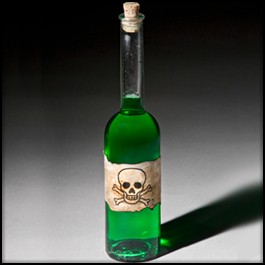
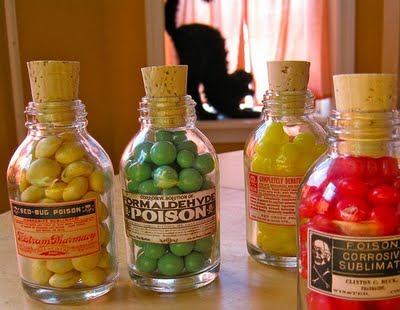

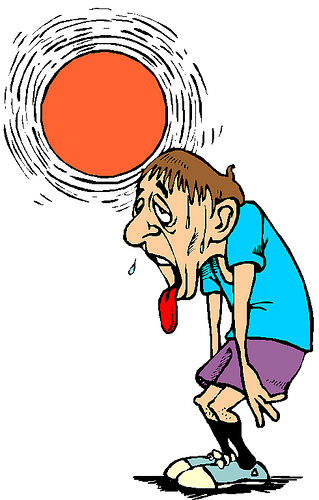
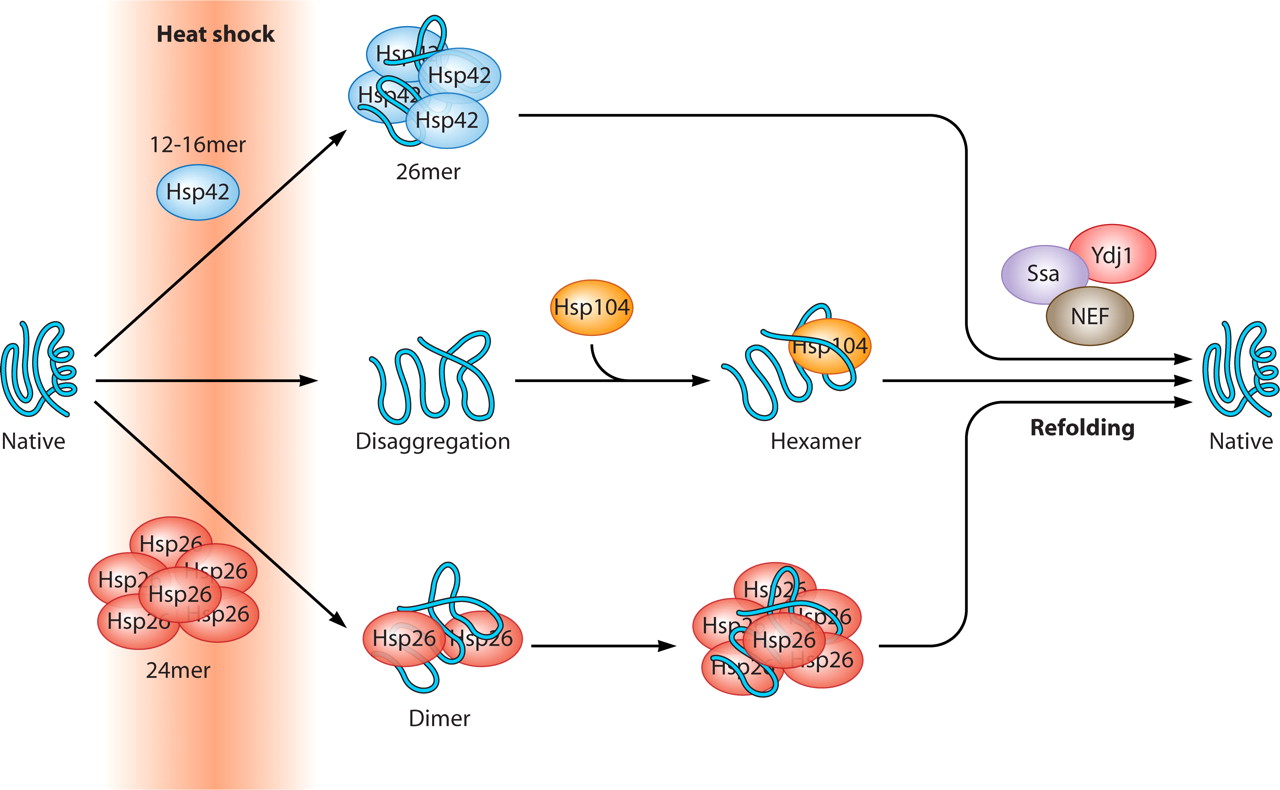
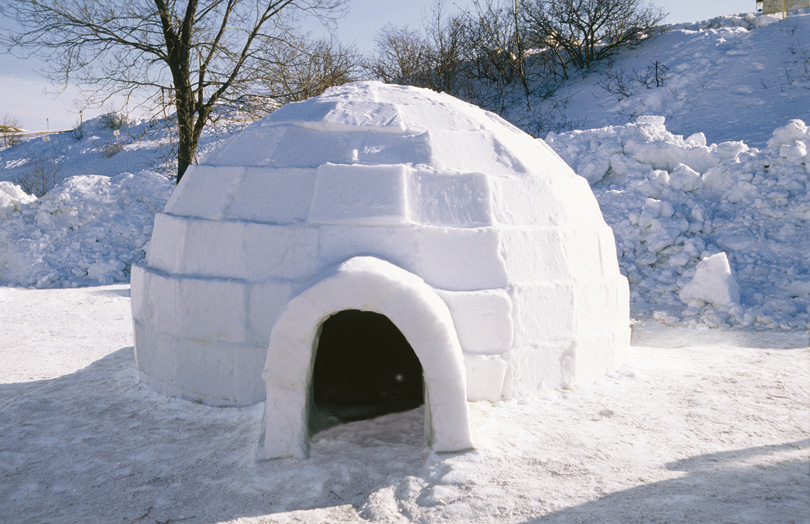
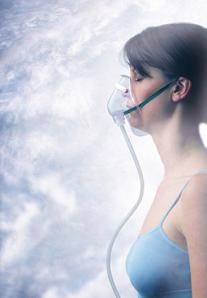
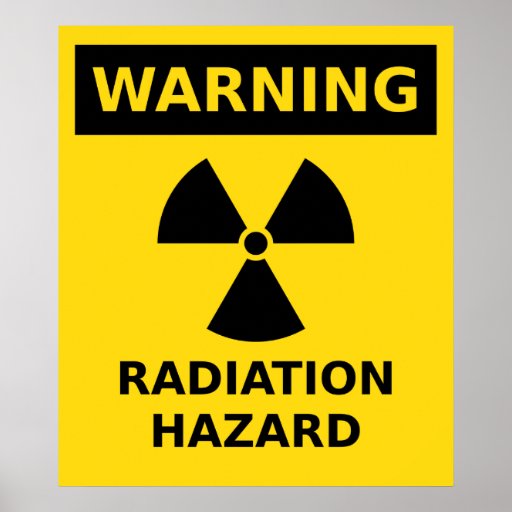

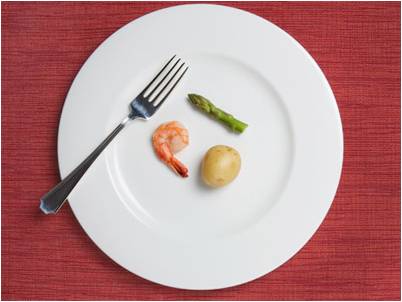


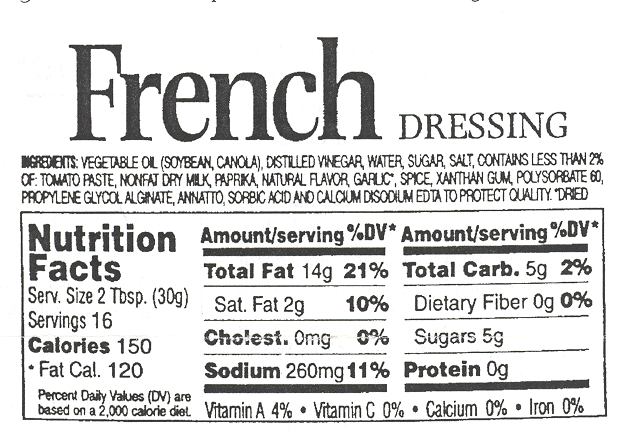

Hi Vince and Jim,
About a month ago (May 18), I posted a comment / series of questions under “Multifactorial Hormesis, Power Point Presentation”, March 19, 2013. At the time I debated whether to post my questions under a more recent entry, irrespective of the topic, or just post a comment under an older entry but on a topic that seemed more on point.
While I could reproduce those questions as a comment to “Hormesis Bars”, rather than “clog the blog” with duplicate entries, I’m hoping one of you might take a look at my comments from the May 18 posting.
I hope the questions are worth the time and trouble to respond. If not, no worries.
Great blog, lovin’ it.
Bob
Here is a link to an article of interest:
Extension of Drosophila Lifespan by Rhodiola rosea through a Mechanism Independent from Dietary Restriction
http://www.plosone.org/article/info:doi/10.1371/journal.pone.0063886
Will this have any effect on humans? What is the pathway? If it is independent of DR can the effect be mimiced? Will it be addative to or multiplicitive of other anti aging effects? Much more research needs to be done BUT
Mechanisims other than those that work via the same pathways as DR are of interest and why not plant this Scandanavian flower just because it is pretty and worry about the roots in 5 to 10 years when the research is more extensive.
** The same flower grows in Russia and China and has reported medical benifit. Skeptical but hopeful Eric
This is a notice that Jim Watson and I are shutting down the Hypoxia bar, as a public health measure. Reasons for this are given in Jim’s blog entry
Jim Watson’s “Top 12” List of “Things I Learned about Aging” in 2013
at http://www.anti-agingfirewalls.com/2014/01/21/jim-watsons-top-12-list-of-things-i-learned-about-aging-in-2013/
Basically, recent research on cell metabolism suggests that hypoxia can do evil molecular things and that the hormetic window for benefits, if any, might be very small.
Vince
Pingback: YGE YOUNGING 1.0 PART 5: PRACTICAL INITIATION OF YOUNGING 1.0 VIA HYPOXIC INTERVENTIONS - AGINGSCIENCES™ - Anti-Aging Firewalls™AGINGSCIENCES™ – Anti-Aging Firewalls™
Pingback: PRACTICAL INTERVENTIONS FOR YOUNGING1.0 – Introduction to the series - AGINGSCIENCES™ - Anti-Aging Firewalls™AGINGSCIENCES™ – Anti-Aging Firewalls™